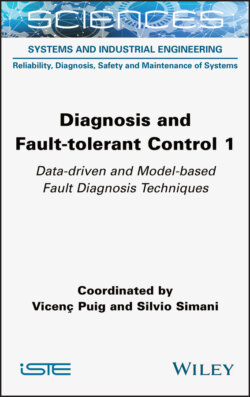Читать книгу Diagnosis and Fault-tolerant Control 1 - Группа авторов - Страница 18
I.8. Data-driven methods for fault diagnosis
ОглавлениеIf several symptoms change differently for certain faults, an initial way of determining them is to use classification methods which indicate changes of symptom vectors.
Some classification methods are as follows (Patton et al. 1989; Basseville and Nikiforov 1993; Babuška 1998; Gertler 1998; Chen and Patton 1999):
1 1) geometrical distance and probabilistic methods;
2 2) artificial neural networks;
3 3) fuzzy clustering.
When more information about the relations between symptoms and faults is available in the form of diagnostic models, methods of reasoning can be applied. Diagnostic models then exist in the form of symptom–fault causalities, for example, in the form of symptom–fault trees. The causalities can be expressed as IF–THEN rules. Then analytical as well as heuristic symptoms (from operators) can be processed. By considering these symptoms as vague facts, probabilistic or fuzzy set descriptions lead to a unified symptom representation. By using forward and backward reasoning, probabilities or possibilities of faults are obtained as a result of diagnosis. Typical approximate reasoning methods are as follows (Basseville and Nikiforov 1993; Chen and Patton 1999):
1 1) probabilistic reasoning;
2 2) possibilistic reasoning with fuzzy logic;
3 3) reasoning with artificial neural networks.
This very short consideration shows that many different methods have been developed over the last 30 years. It is also clear that many combinations of them are possible.
On the basis of different contributions during the last 30 years, it can be stated that parameter estimation and observer-based methods are the most frequently applied techniques for fault detection, especially for the detection of sensor and process faults. Nevertheless, the importance of neural network-based and combined methods for fault detection is steadily growing. In most applications, fault detection is supported by simple threshold logic or hypothesis testing. Fault isolation is often carried out using classification methods. For this task, neural networks are being more and more widely used.
The number of applications using nonlinear models is growing, while the trend of using linearized models is diminishing. It seems that analytical redundancy-based methods have their best application areas in mechanical systems where the models of the processes are relatively precise. Most nonlinear processes under investigation belong to the group of thermal and fluid dynamic processes. The field of applications to chemical processes has few developments, but the number of applications is growing. The favorite linear process under investigation is the DC motor. In general, the trend is changing from applications to safety-related processes with many measurements, as in nuclear reactors or aerospace systems, to applications in common technical processes with only a few sensors. For diagnosis, classification and rule-based reasoning methods are the most important, and the use of neural network classification as well as fuzzy logic-based reasoning is growing.
